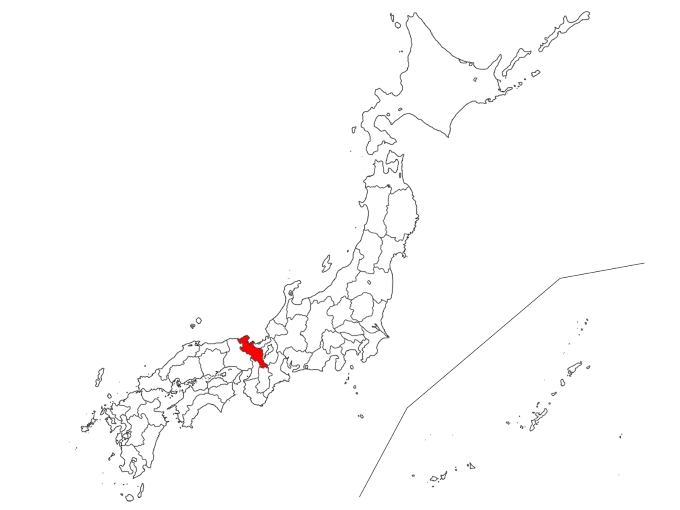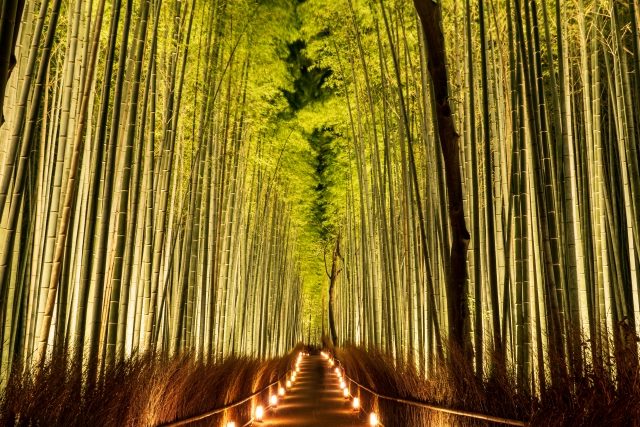Contents
1.Basic Information
In the western part of Kyoto, “Rakusai,” there are many attractions including the World Heritage site Kinkakuji (Golden Pavilion), the symbolic Togetsukyo Bridge of Arashiyama, Dendenmyoujin at Hourinji Temple, a shrine for the IT deity, and the impressive “Unryuzu,” a painting of a dragon on the ceiling of Tenryuji Temple.
Kinkakuji
Kinkakuji is a temple representing Kyoto, with a history of over 600 years and registered as a World Heritage site. Officially called Rokuonji, it is particularly known for its golden Shariden (reliquary hall), which was completely rebuilt five years after being burnt down in a fire in 1950, now adorned with gold leaf.
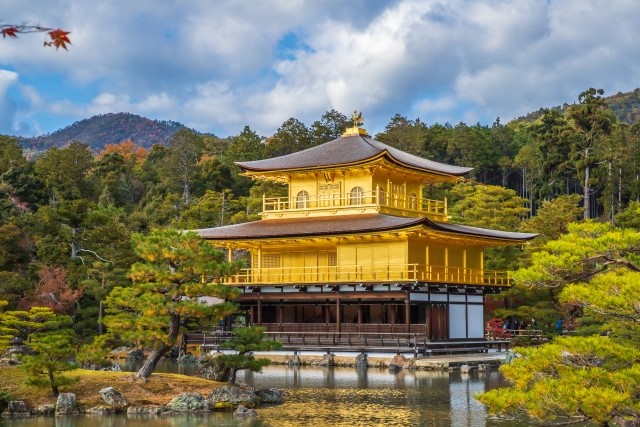
Arashiyama
Arashiyama Park, located at the entrance to Arashiyama, has the Katsura River flowing in front. The park is famous for cherry blossoms in spring and autumn leaves seen over the Togetsukyo Bridge. There are also shops selling tea and sweets and benches for tourists to take a break. Togetsukyo Bridge, symbolizing Arashiyama, is 155m long, and the contrast between the bridge’s curve and the autumn leaves represents Kyoto’s autumn. A light-up event is held in early December, bustling with many visitors.
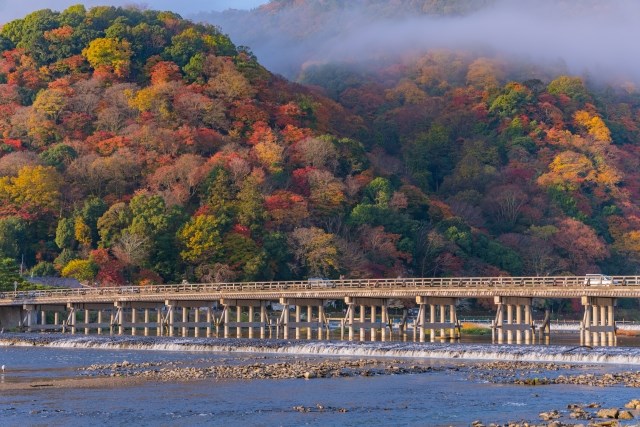
Hourinji
Hourinji, founded in 713 in Arashiyama, is a new power spot known for the Dendenmyoujin shrine within its precincts, which enshrines the deity of electricity and radio waves, and sells unique SD card amulets. It is especially known for the “Thirteen Year Old’s Pilgrimage” where children of 13 pray for wisdom and fortune, with an annual needle memorial service held on December 8th.
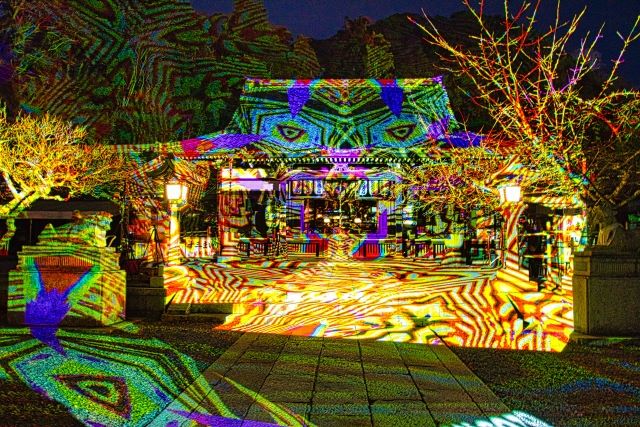
Tenryuji
Tenryuji, a World Heritage site in Saga, was originally the location of an imperial villa and was founded in 1339 by Ashikaga Takauji to mourn Emperor Godaigo. The temple is famous for the “Unryuzu” painting of a dragon on the ceiling, which is open to the public on weekends, holidays, and special days in spring and autumn. The Sogenchi-teien garden of Tenryuji is also known as a beautiful pond strolling garden.
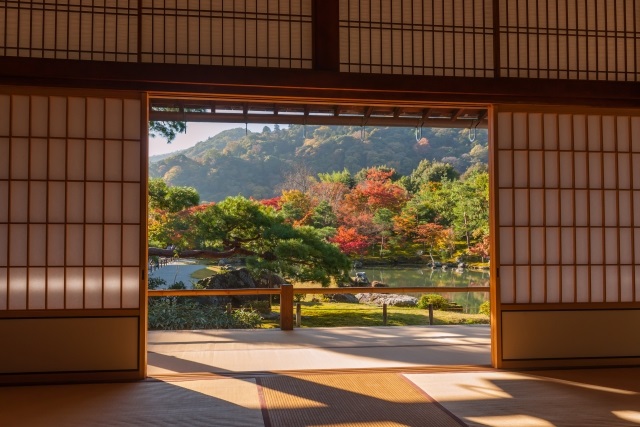
Jojakukouji
Jojakukouji is located at the foot of Mount Ogura in Saga-no, known since the Heian period for its beautiful autumn leaves. The tunnel of autumn leaves around the Niomon gate is particularly enchanting not only during the peak of the foliage but also when the leaves cover the ground. The view of Kyoto city from the temple is also one of its attractions.
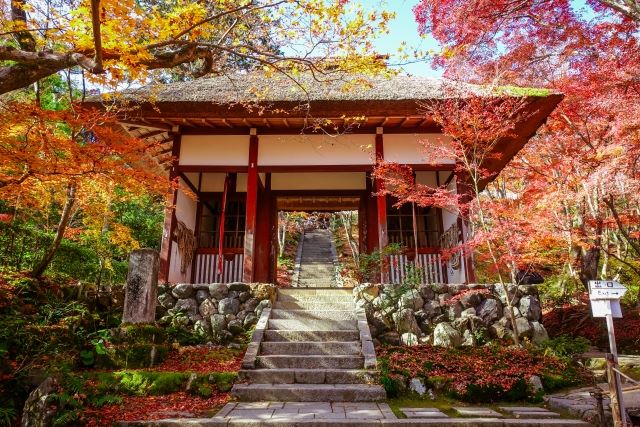
Ryuanji
Ryuanji, a World Heritage site, is a quiet Zen temple known for its “Stone Garden” laid out with gravel. The garden represents Zen philosophy, and its creator and purpose remain a mystery to this day. Its mysterious beauty even captivated Queen Elizabeth.
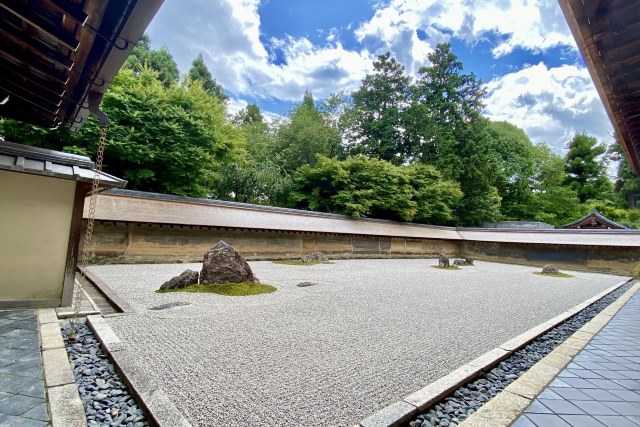
Ninnaji
Ninnaji, a World Heritage site, has deep historical ties to the imperial family from the Heian period to the early Meiji period, known as Omuro. The Omuro cherry blossoms, which bloom from mid to late April, are particularly famous. These cherry blossoms have been cherished by the public since the Edo period.
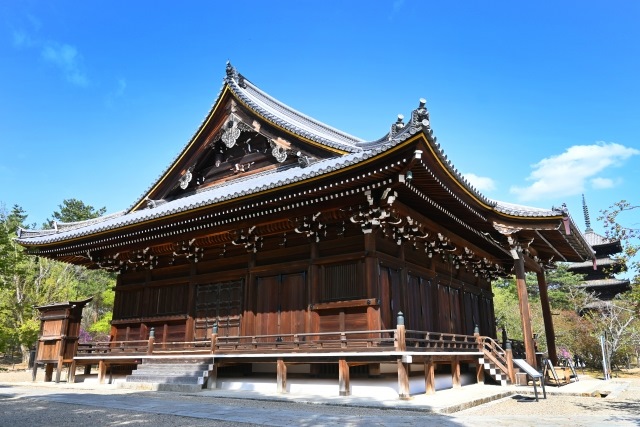
2.Reviews
Bamboo Path (Chikurin-no-michi)
The Bamboo Path is as famous as the Togetsukyo Bridge in Arashiyama. The bamboo forest stretching from Nonomiya Shrine to Tenryuji and Okochi Sanso Garden is overwhelming. The combination of bamboo and autumn leaves in fall is also beautiful. It is recommended to rent a kimono or yukata and enjoy a rickshaw ride.
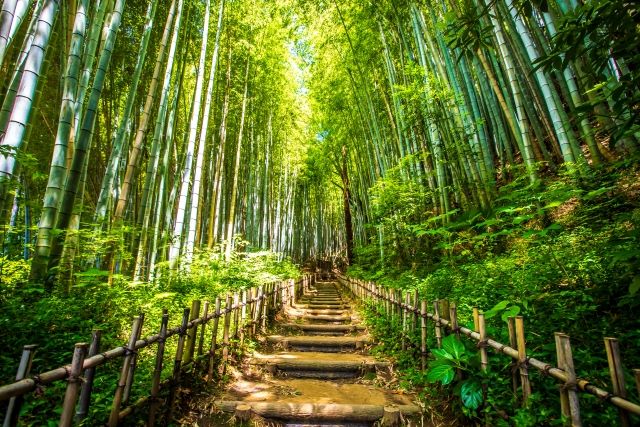
Kimono Forest
The Kyoto Fukuden Railway Arashiyama Main Line’s Arashiyama Station has been transformed into the fashionable spot “Kimono Forest.” Approximately 600 poles lined with colorful Kyoto Yuzen fabrics have been set up, adding charm to the station since its renewal in July 2013. These poles feature 15 different patterns of Kyoto Yuzen from the longstanding Kameda Tomizome Factory, dating back to the Taisho era, and the place is perfect for strolling in a kimono.
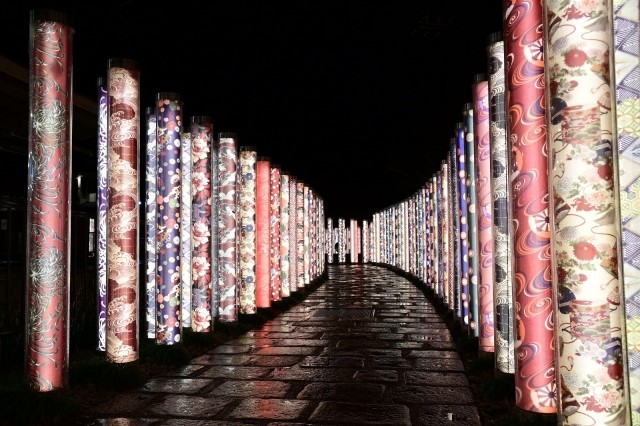
3.Local Food



4.Transportation Information
■ How to get to Kyoto
Kyoto City Official Website (Available in English, Korean, Simplified Chinese, Traditional Chinese, French, and Spanish)
https://ja.kyoto.travel/
5.Map Information
